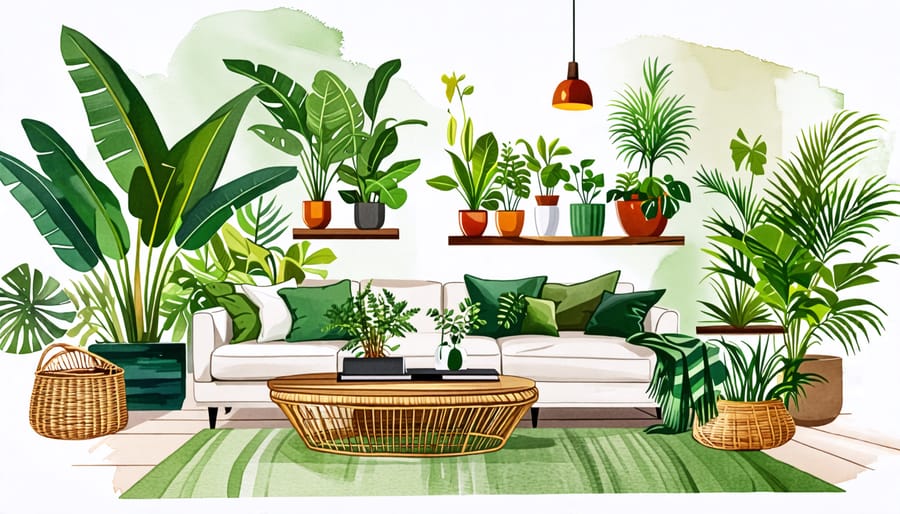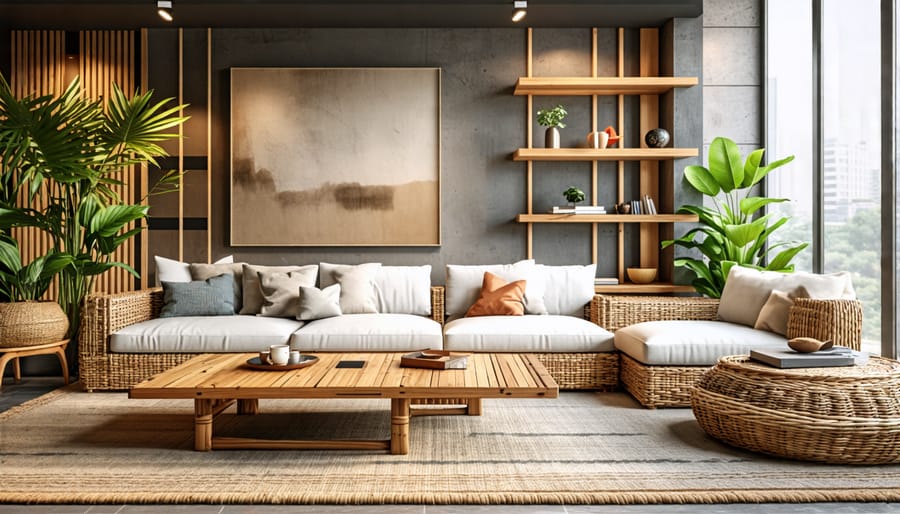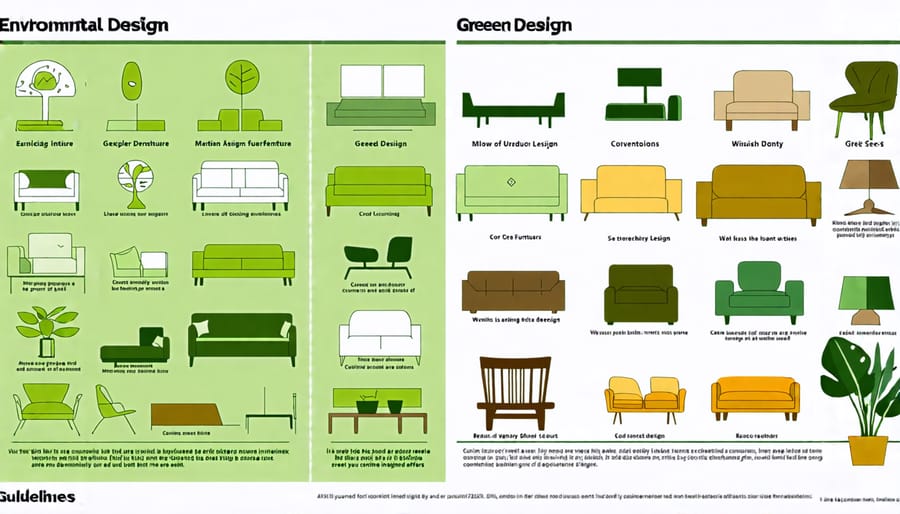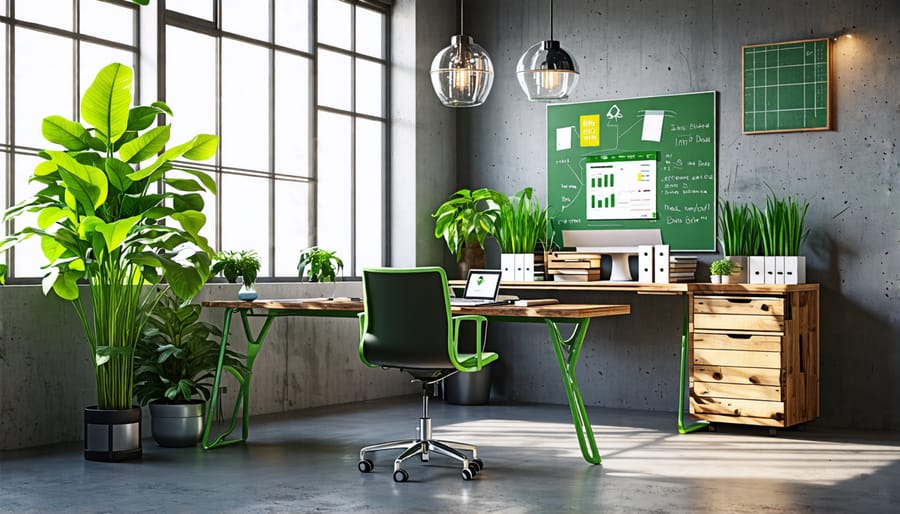
Breathe New Life into Your Space: The Essentials of Green Design Furniture
Choose furniture crafted from sustainably sourced or recycled materials to reduce environmental impact. Opt for pieces with non-toxic finishes and glues, ensuring safer indoor air quality. Repurpose existing items with creative DIY projects, such as repainting or reupholstering using eco-friendly materials. Integrate technology like smart lighting or energy-efficient appliances to enhance functionality and reduce energy consumption in your space.
What is Green Design Furniture?
Understanding Sustainability in Furniture
Sustainability in furniture design embraces a holistic approach that addresses materials, production processes, and lifecycle efficiency. First, choosing sustainable furniture starts with materials—think reclaimed wood, recycled metals, or bamboo, which are not only eco-friendly but also durable and stylish. By sourcing such materials, we reduce waste and the environmental impact associated with new resource extraction.
Next, sustainable production processes minimize carbon footprints by utilizing renewable energy sources and reducing emissions. Designers focus on efficiency, ensuring that each step from crafting to finishing conserves resources. For instance, techniques like water-based finishes and low-VOC (volatile organic compounds) adhesives contribute to healthier environments both in and out of the home.
Finally, considering a product’s lifecycle means understanding how furniture ages, can be repaired, and ultimately disposed of. Opt for pieces designed for longevity, with modular designs that can be updated rather than replaced. This lifecycle awareness ensures that your furniture remains a valuable part of your décor for years to come, all while supporting a greener planet.
Materials Commonly Used in Green Design
Green design furniture shines in sustainability by utilizing materials that respect our planet. Reclaimed wood is a standout, giving new life to old timber and adding unique character to each piece. Bamboo, with its rapid growth cycle, offers a renewable alternative that’s as durable as it is stylish. Recycled metals, such as aluminum and steel, contribute strength and modernity while reducing waste, aligning perfectly with eco-friendly goals. These materials not only minimize environmental impact but also inspire creative DIY projects. Embracing them ensures that your space is both beautiful and responsible, paving the way for a greener future in interior design.

Benefits of Green Design Furniture
Environmental Impact
Green design furniture plays a crucial role in reducing our environmental footprint by prioritizing sustainable materials and eco-friendly production processes. It often features elements like recycled wood, bamboo, or reclaimed metal, which save resources and minimize waste. Additionally, these pieces are crafted to be durable, which reduces the need for frequent replacements and lowers overall consumption. For homeowners and designers looking to support sustainability goals, integrating green design furniture is an inviting way to make a positive impact. Not only does it enhance the aesthetic appeal of a space, but it also promotes a healthier planet, leading to a more sustainable lifestyle for all.

Health and Safety Benefits
Green design furniture offers significant health advantages by minimizing exposure to harmful chemicals often found in traditional furniture. Many conventional pieces contain volatile organic compounds (VOCs), flame retardants, and other toxins that can linger in indoor air, potentially affecting respiratory health and overall well-being. In contrast, green design furniture is crafted from sustainable materials, such as untreated wood, organic fabrics, and non-toxic finishes, ensuring a safer indoor environment. This eco-friendly approach not only reduces allergens and improves air quality but also supports a healthy lifestyle, making it an ideal choice for homeowners and professionals who prioritize wellness in their spaces.
Economic Considerations
Investing in green design furniture is a savvy economic decision that offers significant long-term value. Although the initial cost might appear higher than conventional furniture, the durability and resilience of eco-friendly materials often result in less frequent replacements or repairs, ultimately saving money over time. Additionally, the sustainable production process typically involves fewer resources, lowering environmental impact and appealing to eco-conscious consumers, which can increase property value. Moreover, DIY enthusiasts and frugal homeowners can explore exciting opportunities to revive furniture, stretching their investment further. Choosing sustainable options is not only an investment in beautiful and functional pieces but also a commitment to a healthier planet.
Incorporating Green Design Furniture at Home
Room-by-Room Design Ideas
Transform your spaces into eco-friendly sanctuaries with these sustainable furniture ideas. In the living room, consider investing in a reclaimed wood coffee table and a stylish sofa made from organic cotton or recycled materials. Arrange furniture to maximize natural light and airflow, reducing the need for artificial lighting and air conditioning.
For the bedroom, choose a bamboo bed frame and an organic mattress. These materials are not only sustainable but also provide a healthy sleep environment. DIY enthusiasts can try creating upcycled nightstands using old crates or wooden pallets for a personal touch. Incorporate plants like snake plants or peace lilies for cleaner air and a soothing ambiance.
In the home office, opt for a desk crafted from recycled metal or sustainably sourced wood. Pair it with an ergonomic chair made from recyclable materials, keeping your comfort and the planet in mind. Add shelving units that use reclaimed materials, ensuring ample storage while maintaining a chic aesthetic. Consider integrating smart home technology that manages energy consumption efficiently, further enhancing your green workspace.
Each piece not only adds elegance and functionality but also aligns with sustainable living principles, making it easy to blend style with responsibility.
DIY Green Furniture Projects
Creating your own green furniture piece can be a rewarding project that not only showcases your creativity but also contributes to a more sustainable environment. One simple idea is to make a DIY pallet coffee table. Start by sourcing an old wooden pallet from a local warehouse or online marketplace. Look for one that’s in good condition, ideally with minimal damage or rot.
Begin by sanding the entire surface of the pallet to remove splinters and ensure a smooth finish. Opt for non-toxic, low-VOC (volatile organic compounds) wood stain or paint to suit your interior style, as these are safer for both you and the planet. Once your pallet is prepped and stained or painted, attach four recycled or repurposed casters to the bottom for mobility. This transformation not only gives the pallet a new lease on life but also creates a functional piece of furniture that can easily be moved around your living space.
By embarking on such DIY furniture projects, you’re integrating green design principles into your home, promoting a sustainable lifestyle, and perhaps inspiring friends and family to do the same. This hands-on approach not only curtails waste but also results in a personalized item that reflects your dedication to eco-friendly practices.
Green Design for Commercial Spaces

Case Studies of Commercial Successes
In the heart of bustling urban landscapes, commercial spaces are welcoming a breath of fresh air through the integration of green design furniture. A standout example includes the adaptive reuse project of a historic office building in Chicago, where reclaimed wood and eco-friendly materials have seamlessly transformed the space, highlighting both modern elegance and sustainability. In New York, a boutique hotel is celebrated for its stylish yet environmentally-conscious lobby, featuring furniture crafted from recycled metals and natural fibers, deftly illustrating the principles of sustainable interior design. These examples not only enhance the aesthetic appeal but also demonstrate considerable reductions in carbon footprints, proving that sustainability and style can indeed go hand in hand. Interior designers, eager to adopt these practices, find inspiration and practicality in green design, encouraging businesses to take pride in serving a dual purpose: elevating their decor while safeguarding the planet.
Choosing the Right Furniture for Businesses
Choosing the right furniture for business spaces combines practicality with sustainability, vital for a thriving and eco-conscious work environment. To begin, consider materials; opt for pieces made from reclaimed wood or recycled metal, which not only reduce carbon footprints but also add a rustic, chic touch. Additionally, search for items certified by organizations such as the Forest Stewardship Council (FSC) to ensure responsible sourcing. Functionality is key in professional settings; select modular furniture that adapts to various needs and supports ergonomic health. Look for desks and chairs with adjustable features to accommodate diverse work styles and promote comfort.
Furthermore, durability matters—invest in high-quality pieces that withstand wear and tear without frequent replacement. When it comes to aesthetics, natural finishes and neutral palettes create a calm, inviting atmosphere that aligns with sustainable branding. Lastly, if technology integration is important, explore innovative solutions like desks with built-in charging stations or cable management systems. By prioritizing green furniture, businesses not only contribute positively to the environment but also foster a healthier and more productive workspace.
Conclusion
Embracing green design furniture in both residential and commercial spaces is more than just a trend; it’s a meaningful step toward a more sustainable and aesthetically appealing environment. By choosing pieces crafted from eco-friendly materials, you can reduce your carbon footprint while transforming your living or working area into a stylish sanctuary. For homeowners and businesses alike, the appeal of green design not only lies in its environmental benefits but also in its potential to introduce unique aesthetics and enhance the overall ambiance.
Whether you’re a DIY enthusiast looking to upcycle existing pieces or an interior designer seeking innovative solutions for clients, integrating green furniture can be both rewarding and impactful. Commercial property owners and real estate agents find that spaces with sustainable interiors often prove attractive to environmentally-conscious clients, making it a smart investment both financially and ecologically.
Incorporating these elements can begin with simple steps, such as selecting items made from reclaimed wood or exploring new materials like bamboo. With a variety of choices available, moving toward a greener interior is accessible to anyone willing to take part. Ultimately, integrating green design furniture supports broader ecological goals while offering the satisfaction of crafting beautifully personalized spaces.
